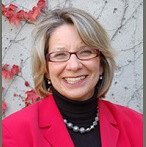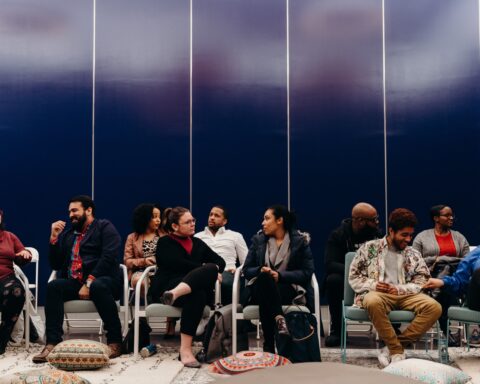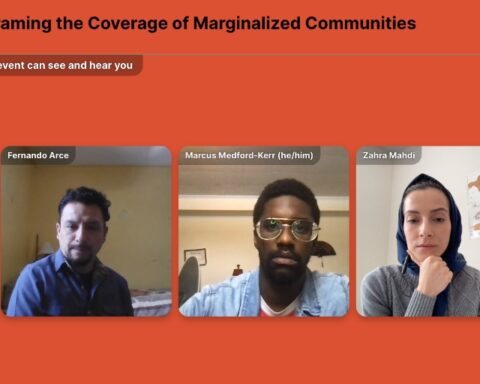Readers need an independent channel to connect with any media organization to ensure the news content produced is of the highest standard.
As New Canadian Media’s first ombudsperson – I think the term “ombudsman” excludes women and “public editor” signals a professional journalist too close to the organization’s editorial board – I am here to respond to reader comments and complaints about bias, inaccuracy and unfairness in news compilation and coverage over the next year.
I believe the public is an essential part of the journalistic process, demanding accuracy, fairness, ethical practice and impartiality.
I think balance in reporting on complex issues is a false goal. What is more important is impartiality, ensuring that all sides of an issue are presented fairly, that reporters clearly distinguish between news and opinion, and that news organizations seek diverse voices as sources or election pundits.
Like Kathy English, the Toronto Star’s public editor, I think balance in reporting on complex issues is a false goal. What is more important is impartiality, ensuring that all sides of an issue are presented fairly, that reporters clearly distinguish between news and opinion, and that news organizations seek diverse voices as sources or election pundits.
Since this fall’s federal election campaign promises to be long, close and volatile, upholding these standards will be even more important than usual.
From my vantage point, as a researcher in political communication, I want to suggest some things to watch for in news coverage of this election.
Coverage of the electoral system and process
The new federal Fair Elections Act, passed in 2014 despite objections, removes from Elections Canada the research and monitoring function in the promotion of voting.
It must still provide information about how, when and where to vote, and some of its voter education programs continue, but on a smaller scale.
[B]ecause the campaign is the longest in many years and access to financial resources is not equal among parties, tracking of incidence of earned coverage and paid ads for parties will be critical.
This change, combined with new requirements for proving eligibility to vote (especially among new voters), makes it important for news organizations to monitor the conduct of the election, use of dirty tricks and especially the impact on awareness and turnout of voters, to see if the Fair Elections Act is indeed fair, and perceived by voters to be so.
The fact that there are 30 new ridings and 50 departing MPs suggests there will be at least a 25 per cent turnover in seats. Background on riding record will provide important context for readers.
And, because the campaign is the longest in many years and access to financial resources is not equal among parties, tracking of incidence of earned coverage and paid ads for parties will be critical.
The obligation to be fair and impartial
Best practices require that news organizations adhere to a code of ethics and disclose their editorial approach to election coverage. In particular, concern has often been raised over how they report polls: full disclosure of sponsor, sample size, method and margin of error are required.
Reputation for editorial impartiality and integrity can be compromised if parties make use of news coverage from an organization without permission. Since this reputation and good will takes years to build up, news organizations are beginning to crack down on such partisan exploitation, especially if in an attack ad.
If an ad brings the system of democracy or the craft of the public politician into disrepute, is it unfair – just as it is if it harms a person’s reputation?
When thinking about balance, Canadian political scientists and media experts are concerned about the tipping point between “horse race” (who’s winning, who’s losing) and “issue” (what voters care about) coverage, strategic analysis of the local riding and the national picture, and fairness in attack ads.
If an ad brings the system of democracy or the craft of the public politician into disrepute, is it unfair – just as it is if it harms a person’s reputation?
The test is a “reasonable person” one, where most news organizations rely on on-the-street interviews with members of the general public for shallow and immediate feedback.
Campaign realists claim that Canadians may dislike attack ads, but they work, if they are believed to be credible and fair comment.
The rise of partisan, attack politics is often presented as inevitable, but it comes at a cost.
At what point do attack ads cross the line? When should news organizations not include the ads in reports on them? Should the practice be reined in and, if so, how?
In Canada, local candidates are rarely targeted for attack ads, but standards may be changing, especially in hotly contested ridings.
The category of “reality check” investigative reports on campaign claims is growing, and good for journalism.
Finally, in the new era of what experts call the “permanent campaign,” with a fixed election date known by all parties well in advance, it will be important for reporters to separate the pump priming before the writ is dropped from intrinsic campaign effects post-writ.
The category of “reality check” investigative reports on campaign claims is growing, and good for journalism. In a recent turn, the CBC has subtly shifted its reference to Harper away from Prime Minister to Leader of the Conservative Party in reference to the campaign – putting all parties on the more equal footing, the opinion polls indicate.
Gratuitous racialization and non-discriminatory coverage
Slow progress is being made in codes of ethics on prohibiting reference to race and ethnicity that is irrelevant to a story – what some call “gratuitous racialization.”
Erin Tolley of the University of Toronto has been interviewed by NCM on her forthcoming book-length study, which suggests that racial discrimination was not overt during the 2008 election: incumbent candidates were relatively free of it, but racialized challengers still faced framing as a long-shot candidate or as a special interest in-group candidate, or were pigeon-holed on issues.
Equal treatment of candidate coverage in length and placement is important. Since the last election, Canadian news organizations are more often subscribing to codes that uphold non-discriminatory practice: stereotyping or marginalizing of groups or individuals is avoided by use of neutral, objective language in producing a story.
Immigrants, ethnocultural politics and new Canadians
Ethnic outreach has become part of the Harper Conservative brand, and no one is more associated with it than Jason Kenney. Watchers of this election will see if their assumption that ethnic voters are part of the new right wing holds true, or if the Liberal Party will regain its appeal and other parties will make new inroads.
There has been remarkably little empirical research in Canada on visible minority voters and their preferences – or their reactions to things like attack ads, for example, despite growing appearance in them.
A byproduct of such intensified “push politics” is that parties may bombard community papers or ethnocultural community groups with free event news, comment and “special” briefings, in different languages, not available to mainstream media.
For some mainstream reporters, this special status has been a hot-button item since candidates may say one thing in one language, but something else in a different one, thereby breaching trust, but the extent of the practice and its impacts are not really known.
There has been remarkably little empirical research in Canada on visible minority voters and their preferences – or their reactions to things like attack ads, for example, despite growing appearance in them.
The fact that new Canadians have had higher turnouts in past elections is touted as a source of pride, but researchers with the Metropolis Canada project, the network on immigration studies, wonder if the more precarious economic circumstances of recent newcomers may drag down voter turnout, just as it appears to be bringing down the rate of naturalization, or proportion of permanent residents who become citizens.
This election promises to be an exciting one for NCM and its readers, and those of us monitoring the media.
Catherine Murray, New Canadian Media’s Ombudsperson, is a professor in the School of Communication at Simon Fraser University. She has researched and written on B.C. ethnic media, self-regulation and the politics of cultural diversity in Canada. Dr. Murray has also served as a peer juror on the Canadian Broadcast Standards Council and chaired the Ombudspanel for the CBC during the 2004 federal election. She is currently researching cultural work and cultural policy in Canada, with a special focus on cultural production.





